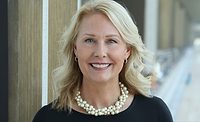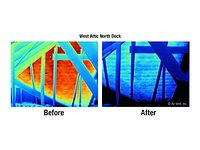
Kirk Herold reviewed the proper use of personal fall protection equipment during his session on safety.
“Safety will never make you a million dollars, but it can save you a million,” said Kirk Herold as he opened his session titled “Safety: The Top Priority.”
Herold, vice president of Safety Compliance Co., Moreno Valley, Calif., specializes in helping construction companies comply with Cal-OSHA, Fed OSHA and EM 385 regulations in order to protect employees, reduce liability exposure and decrease accidents. He explored topics including fall protection, heat illness and silica exposure at Best of Success 2007.
Safety affects all phases of a business, Herold said, including sales, profitability and production. He pointed to 54 deaths from falls in California over the past year - 25 of them involving roofers - stating, “We still have a problem with the culture. We have to get past the idea that a working in a harness will slow you down. Get the idea across that wearing fall protection is a long-term investment. We’ve made great strides as an industry, but there are still major contractors out there not wearing fall protection equipment.”
Herold reviewed personal fall arrest systems and fall restraint systems, including the proper use and inspection of harnesses, lanyards, lifelines, snaphooks and anchor points. “The anchorage point should be strong enough to withstand the maximum fall-arrest force, with a minimum of 5,000 pounds per person attached to an anchor point,” he said. “That’s the equivalent of a small Toyota pickup truck you’re trying to hold.”
He also examined silica exposure in the roofing industry, noting that silicosis - a chronic lung disease caused by breathing in silica, a key component in cement - has no known cure. Cutting concrete tiles exposes workers to silica dust, so caution must be exercised. “Workers doing this type of work must use a respirator. Make sure they are wearing it correctly, store it properly, and know how to clean and inspect it,” he advised.
Proper education and training is the key to preventing injuries and accidents, maintained Herold, whether it involves fall protection, heat illness or silicosis. “You should never have a foreman’s meeting without discussing safety,” he said. “Create a safety culture. Have meetings, inspect jobsites, but live it. Safety, sales, profitability and production - it all has to be in the same sentence.”
“Changing a culture is a process,” he concluded. “It’s like making a U-turn with an ocean liner. It takes time.”


